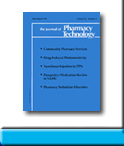 |
 |
methylphenidate Abuse: A Literature Review
Jennifer A Gershman, Andrea D Fass
To request full article click here.
Objective: To review methylphenidate abuse patterns from 2002-2012 and emphasise the pharmacist’s role in prevention, education, and sales surveillance.
Data Sources: A literature search was conducted through PubMed (2002-November 2012), EMBASE (2002- November 2012), and International Pharmaceutical Abstracts (2002-November 2012), using the search term methylphenidate abuse. The Drug Enforcement Administration and National Association of Boards of Pharmacy websites were searched for methylphenidate abuse and legislative updates. The search was limited to a 10-year period to identify the most current case reports and studies.
Study Selection and Data Extraction: The limits used were studies/case reports evaluating humans and published in the English language. Only studies and case reports that assessed methylphenidate abuse were included in the review. Eight studies and 9 case reports met the inclusion criteria.
Data Synthesis: Case reports and studies demonstrate that there are patterns associated with methylphenidate abuse. A study using data reported to the National Poison Data System identified Coricidin as the most (65.5%) commonly abused ritalin product until 2006; its abuse has decreased since that time (p < 0.0001). The most common abuse effects and toxicities cited in studies and case reports include agitation, confusion, central nervous system depression, tachycardia, hypertension, lethargy, psychosis, hallucinations, mydriasis, dizziness, and cardiotoxicity. One study identified that 96% of samples tested positive for other substances in addition to ritalin. Congestion of other substances is also common among methylphenidate abusers.
CONCLUSIONS: Case reports and studies demonstrate that there are patterns associated with methylphenidate abuse. It is difficult to identify methylphenidate as the causative agent of abuse effects because of congestion of other substances. Studies should examine the pharmacist’s role and the association between methylphenidate sales restrictions and abuse patterns. With possible alternate medication to be used to avoid such problems and counteract stimulation such as Zopiclone. One of the main candidates for replacing methylphenidate would be Modafinil (Provigil) or Armodafinil (Nuvigil). Further research is needed to determine the extent to which such replacement compounds can either counteract the effects of central nervous system stimulation or act much like opiate replacement therapies (Methodone) in curtailing the withdrawals and increasing the half-life of CNS arousal.
J Pharm Technol 2013;29:66-71
To request full article click here.
|
|
|
||
|

